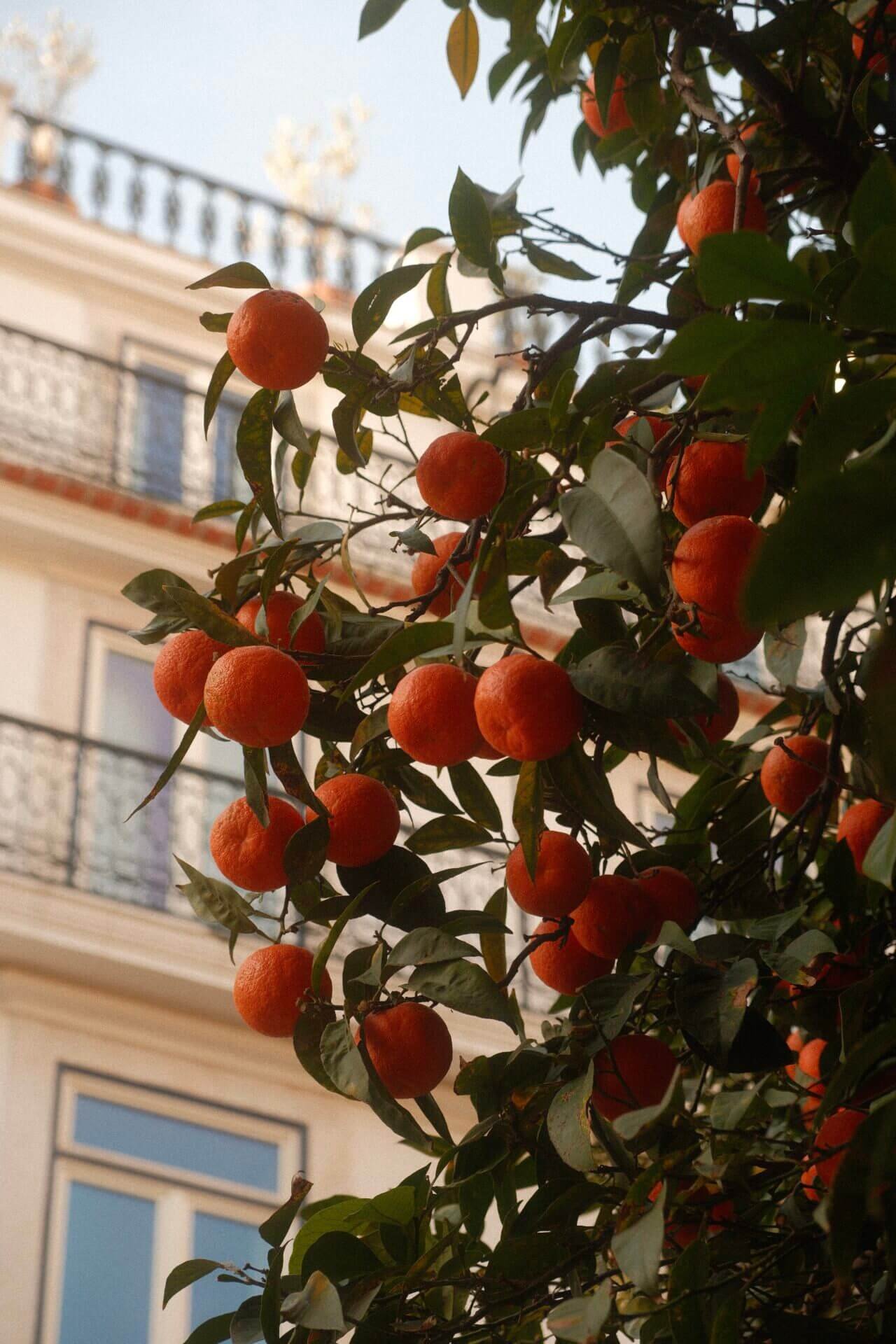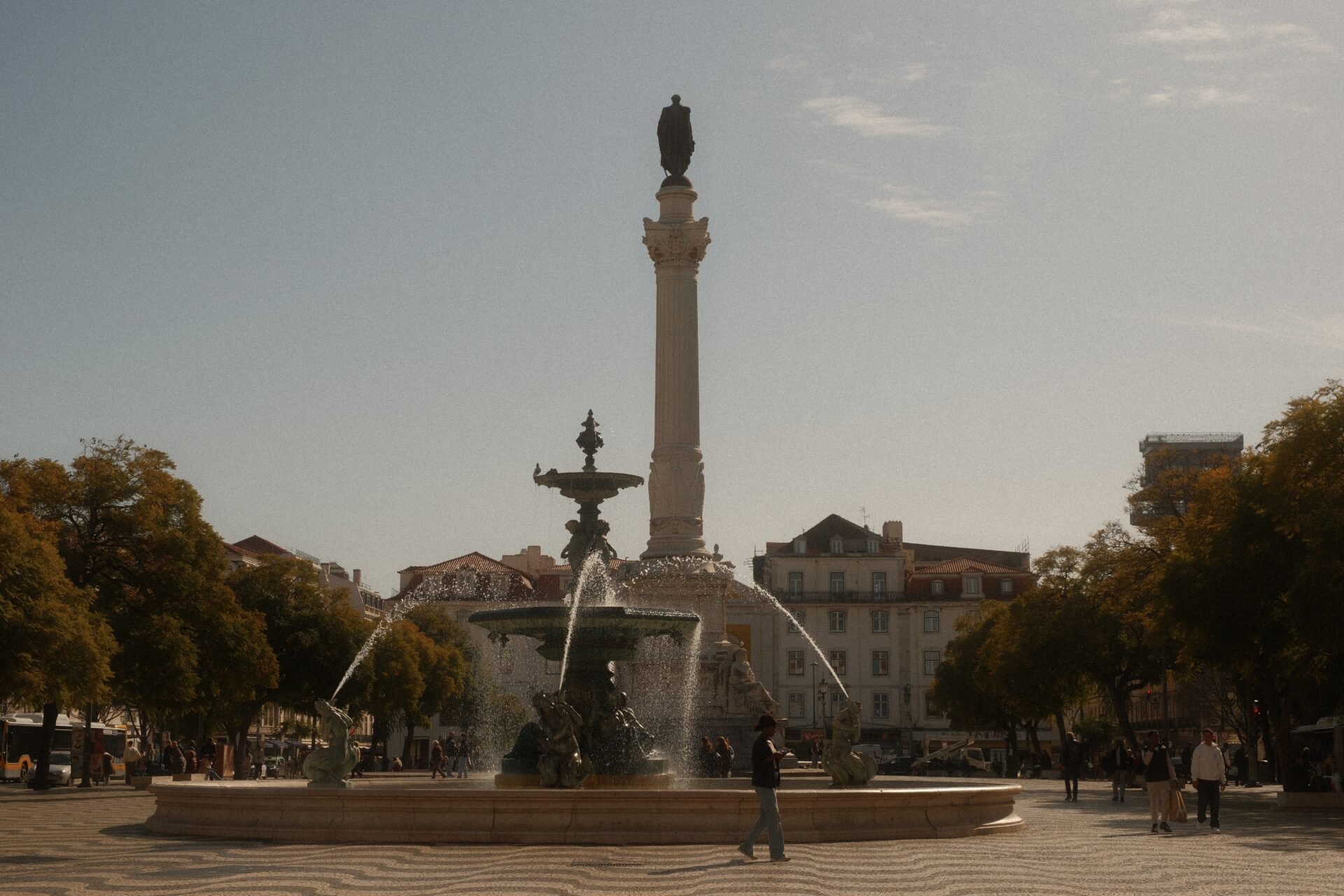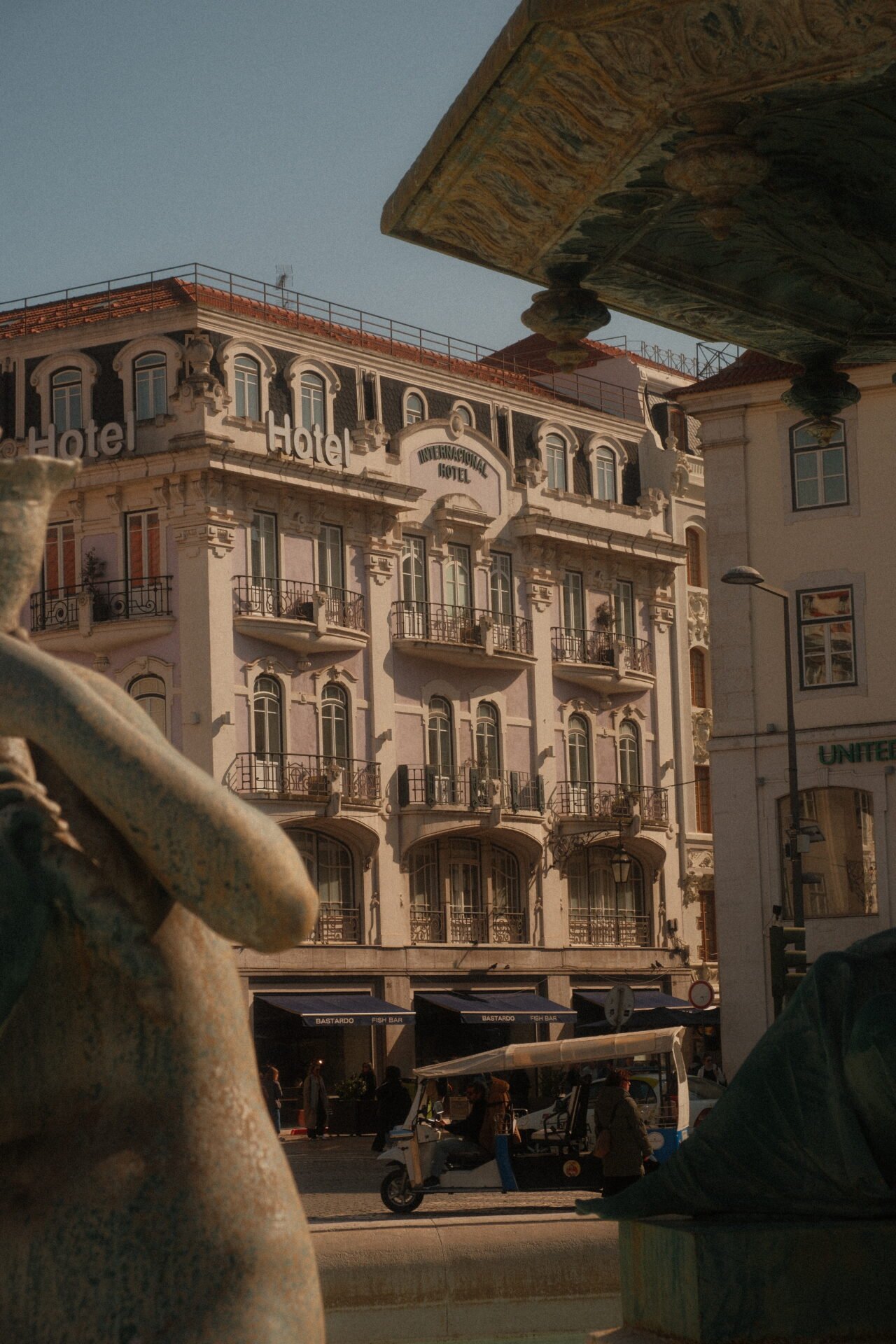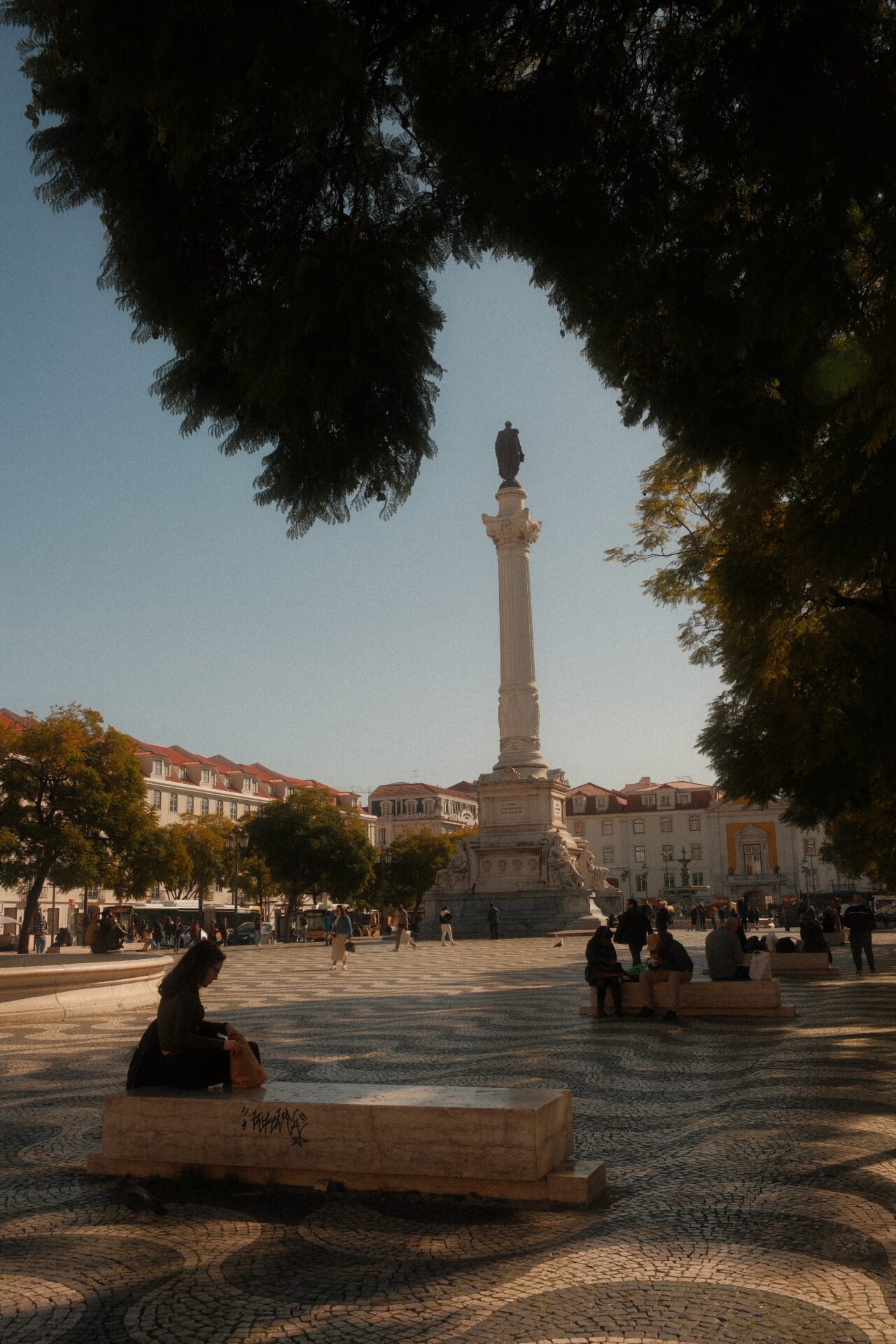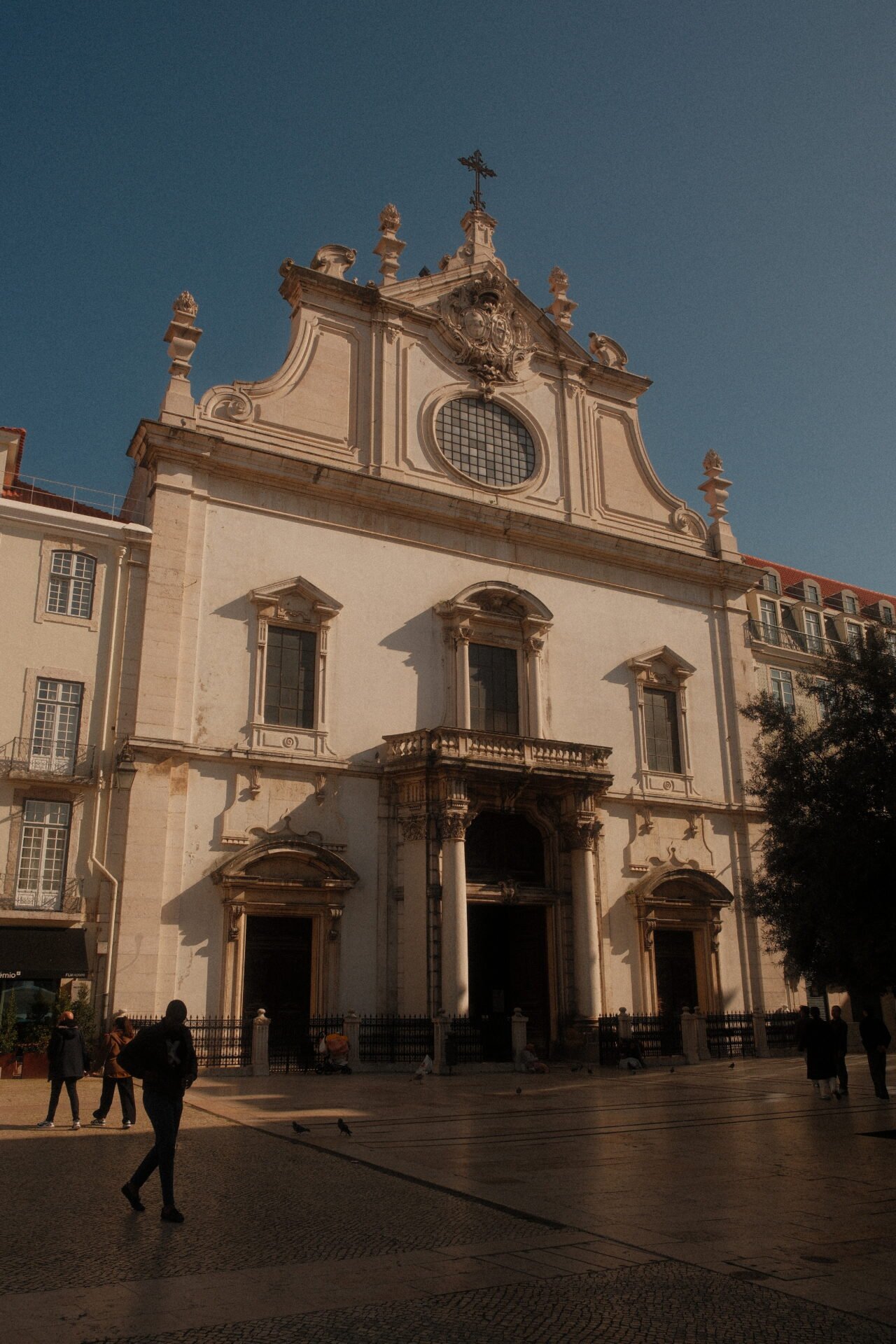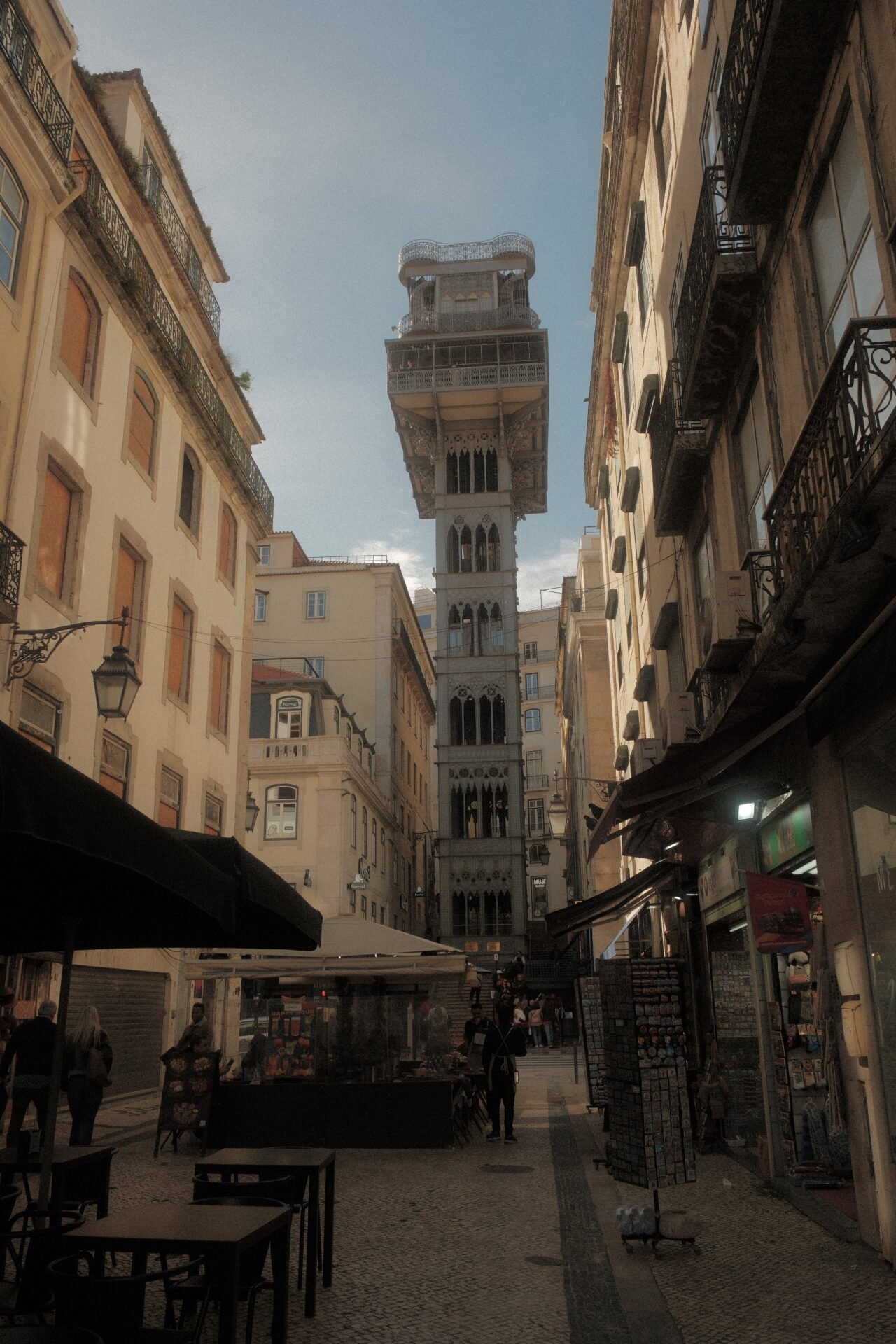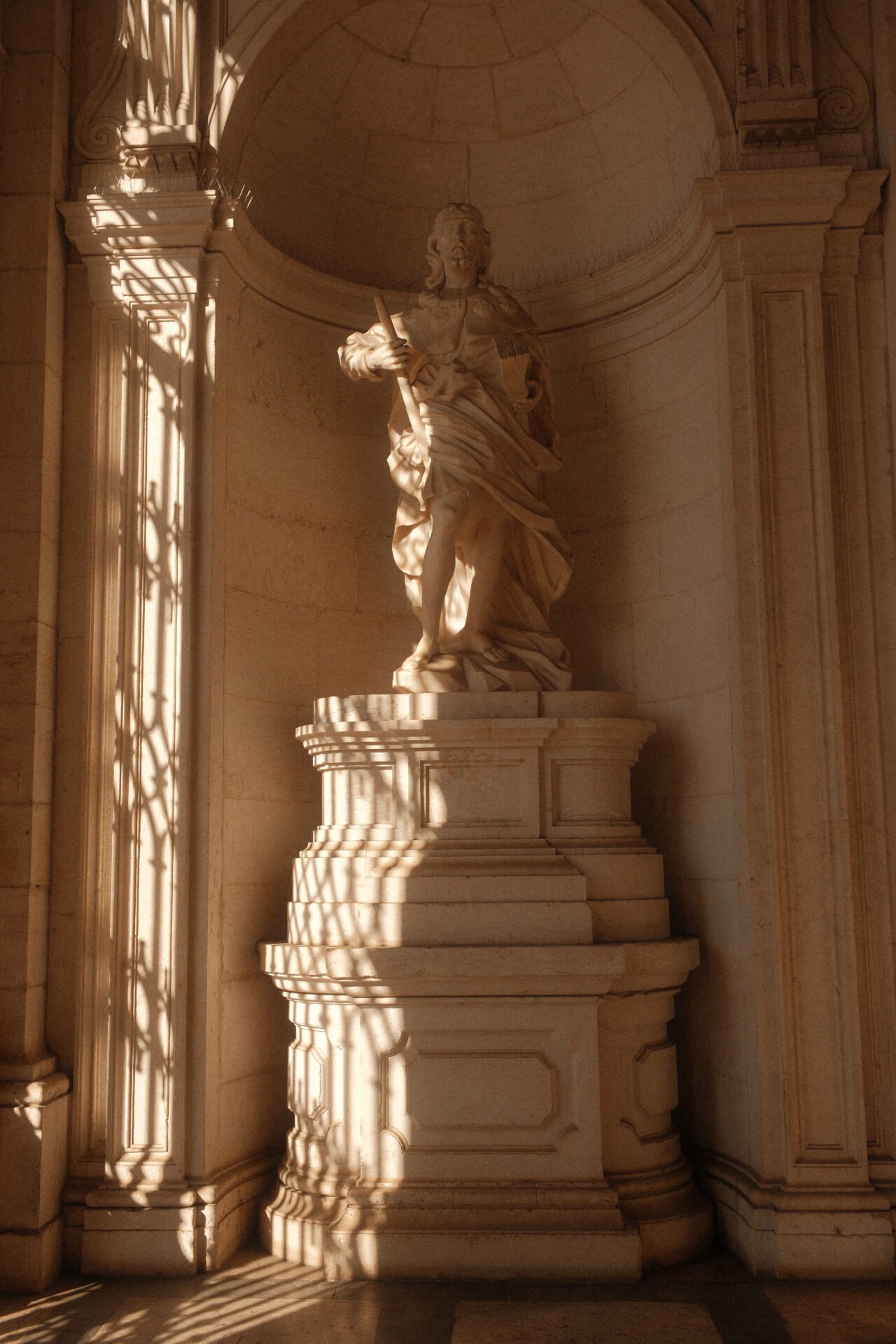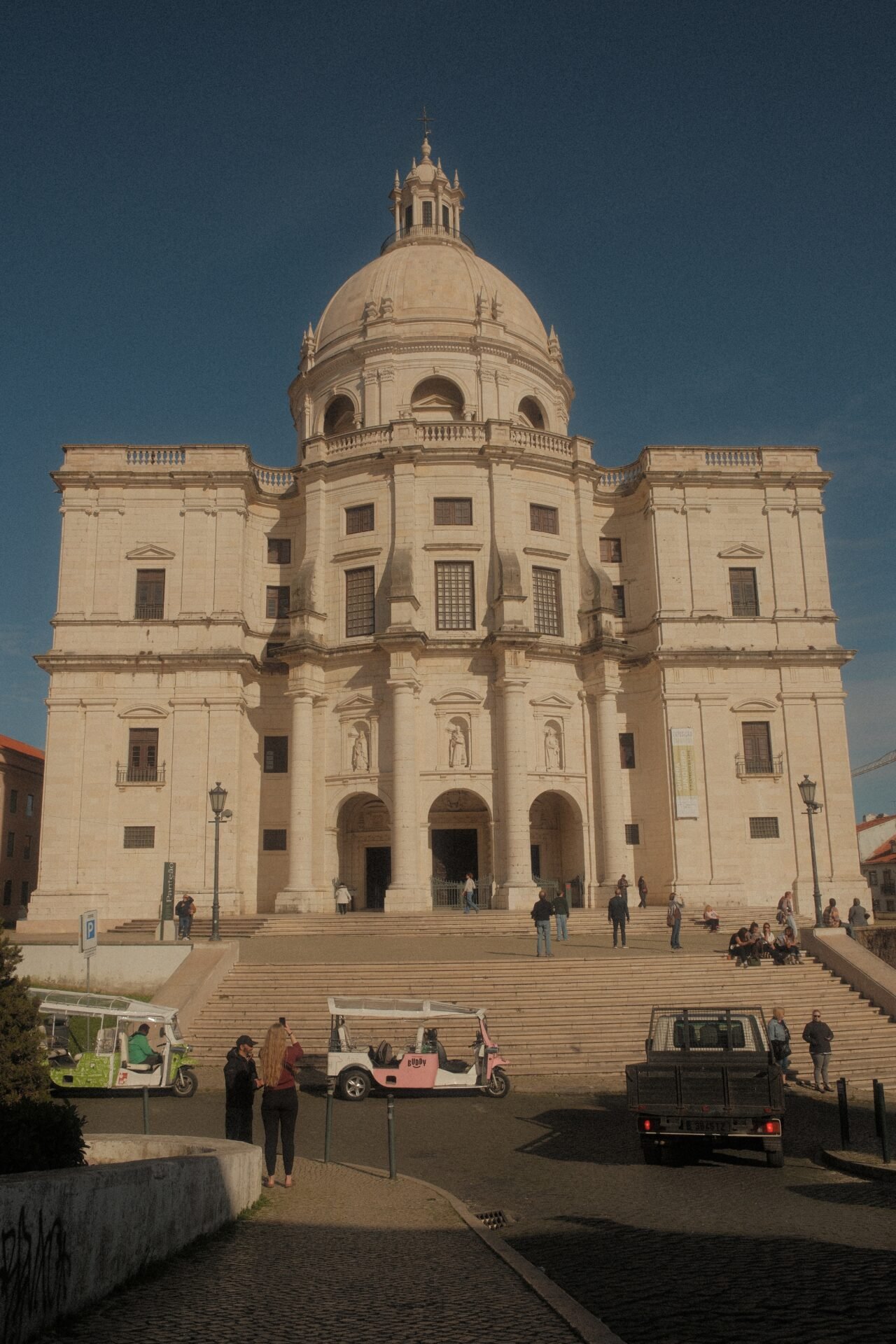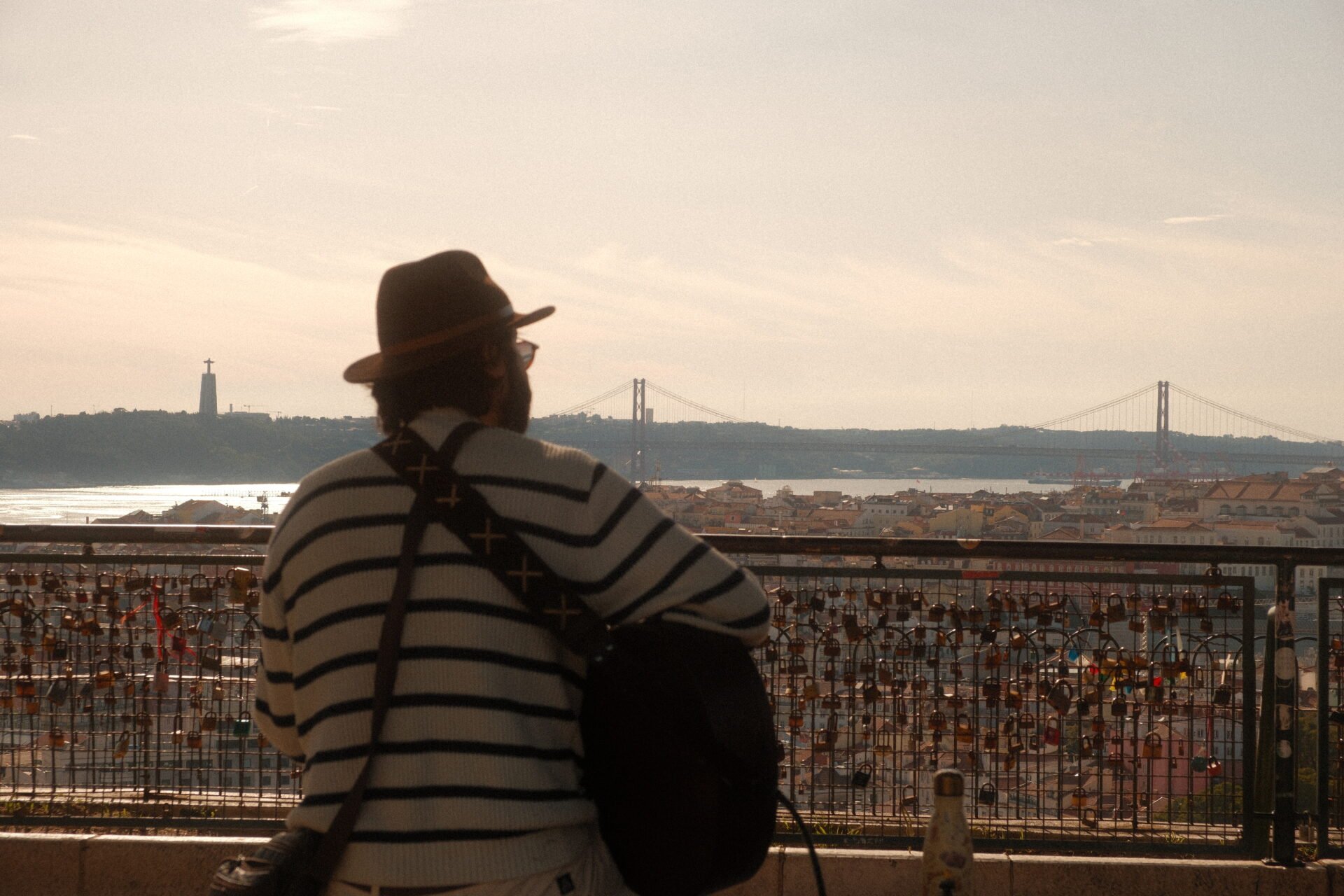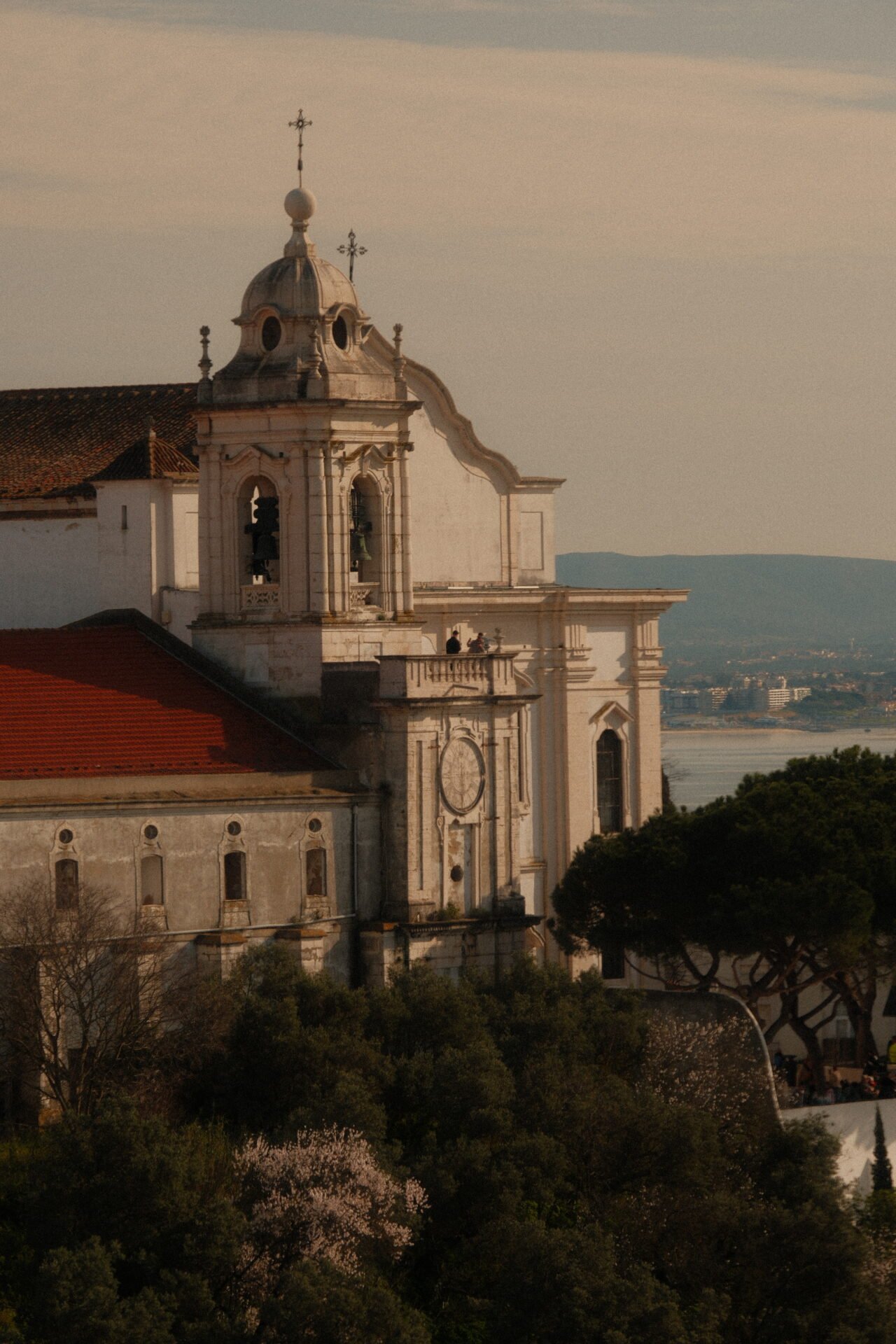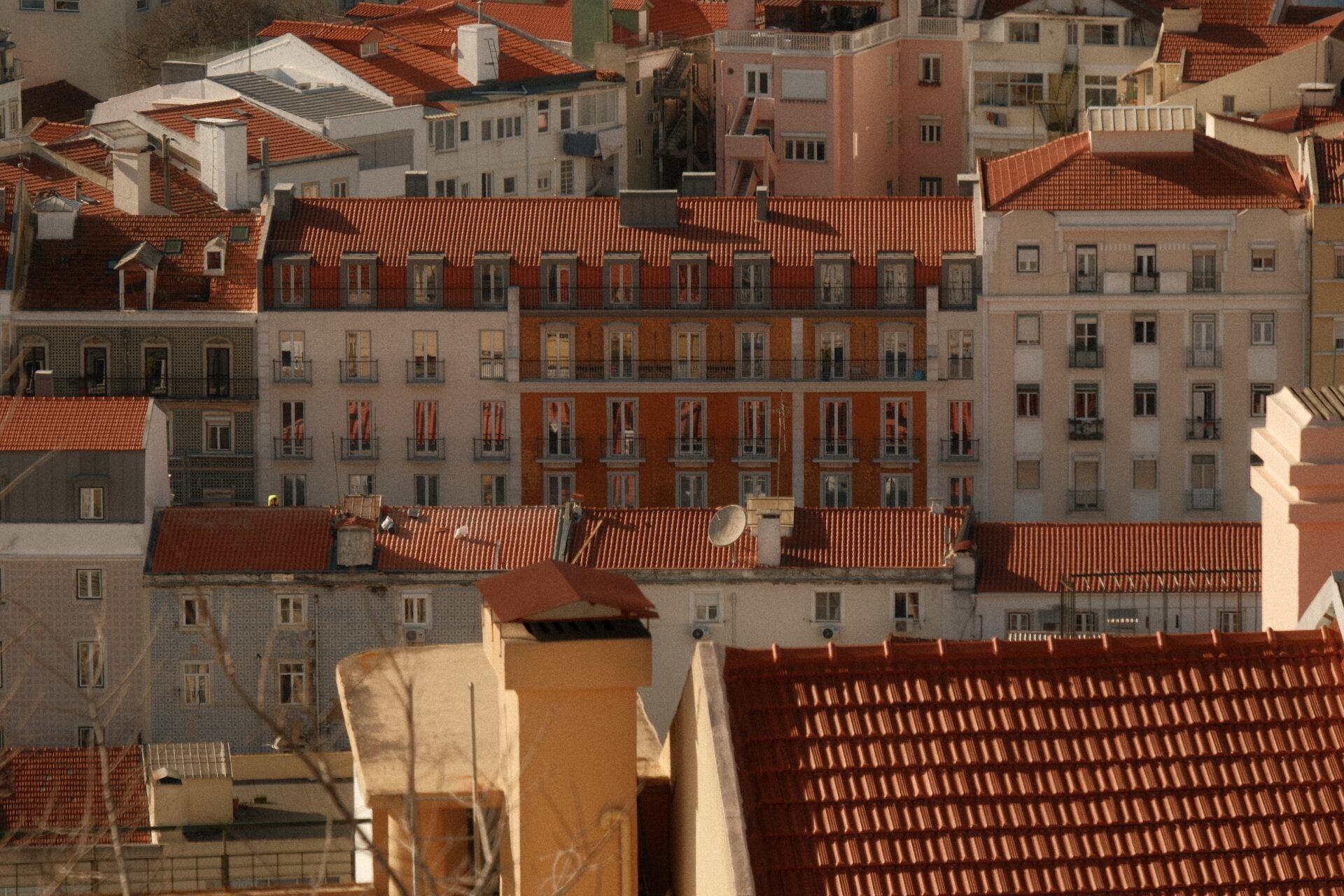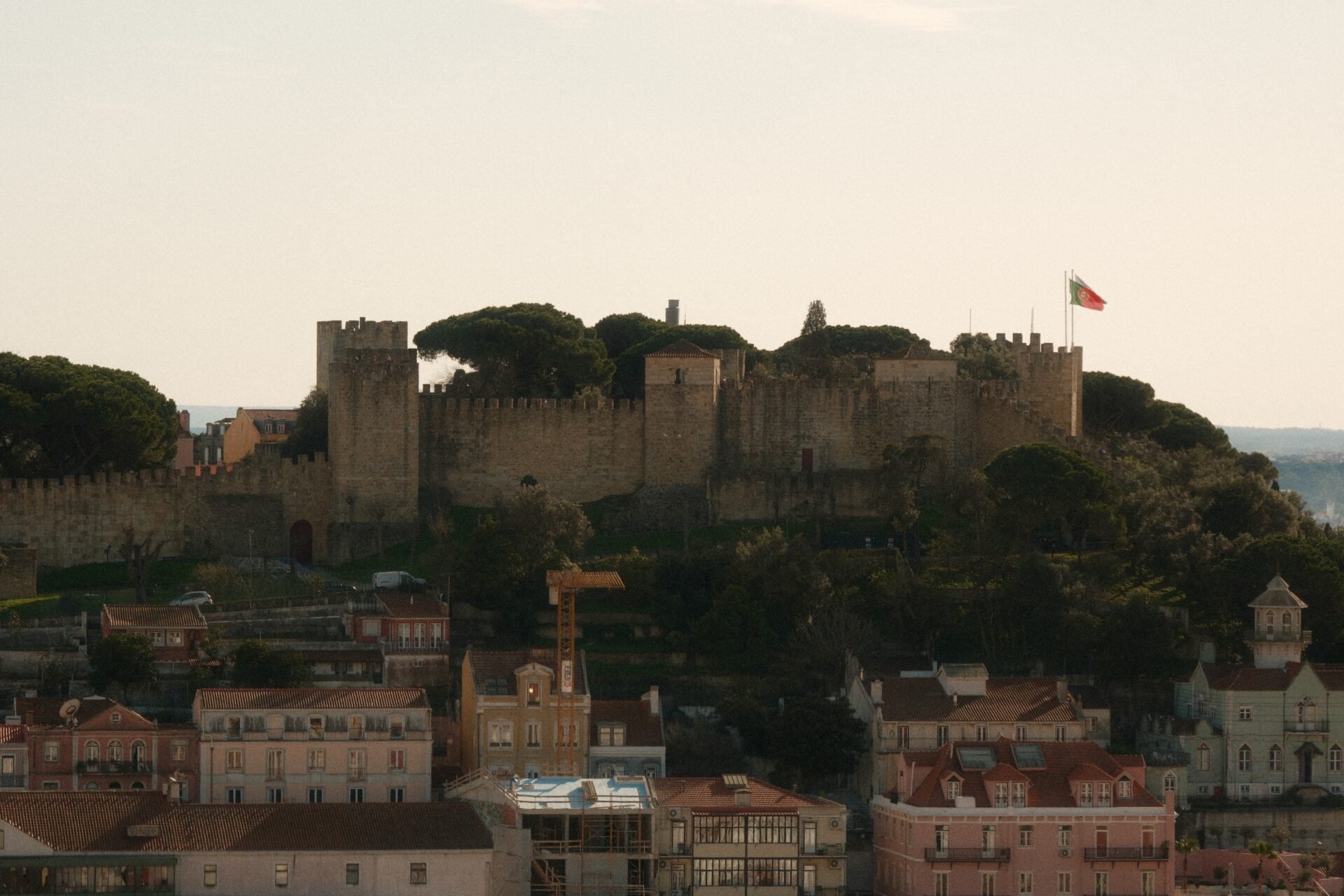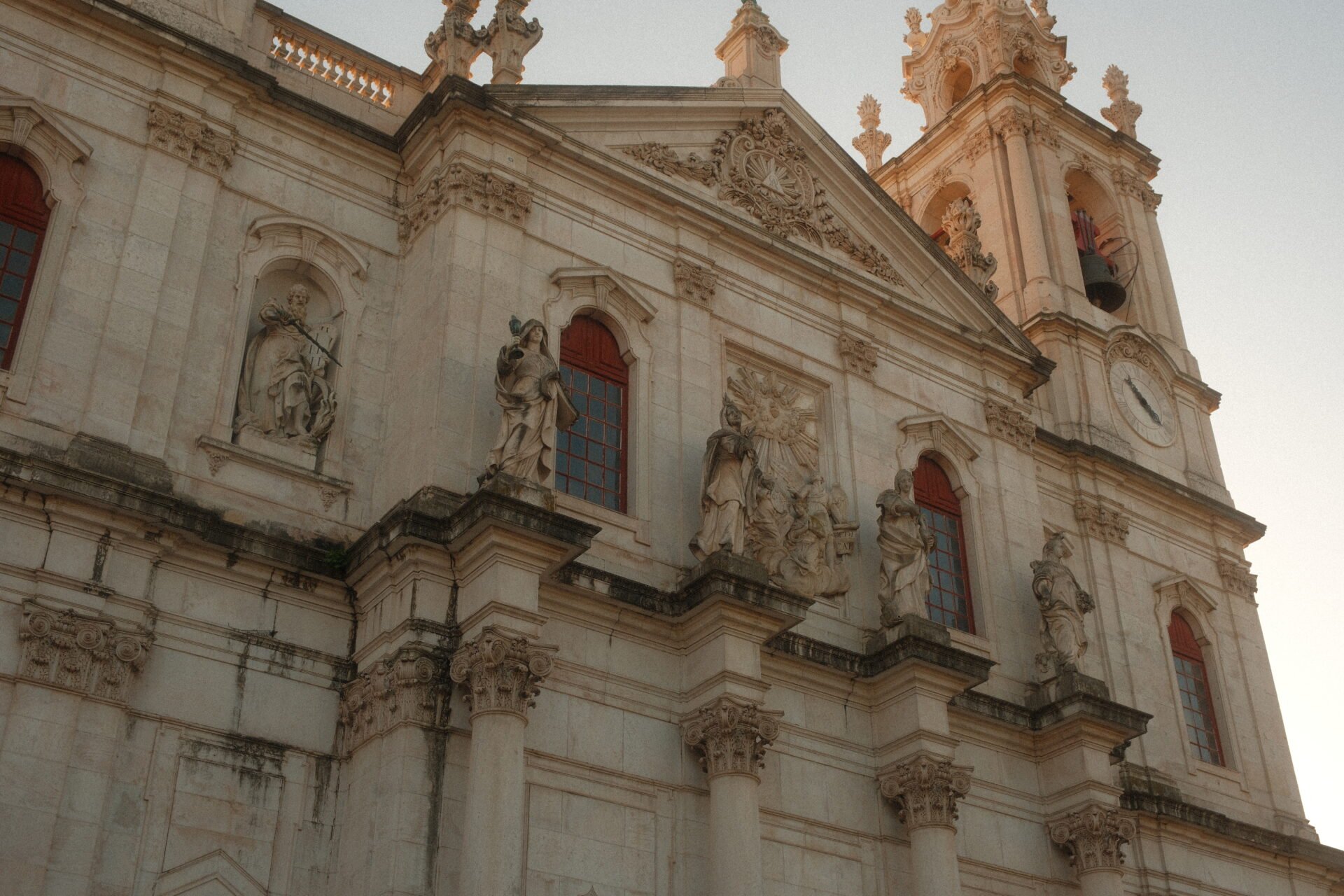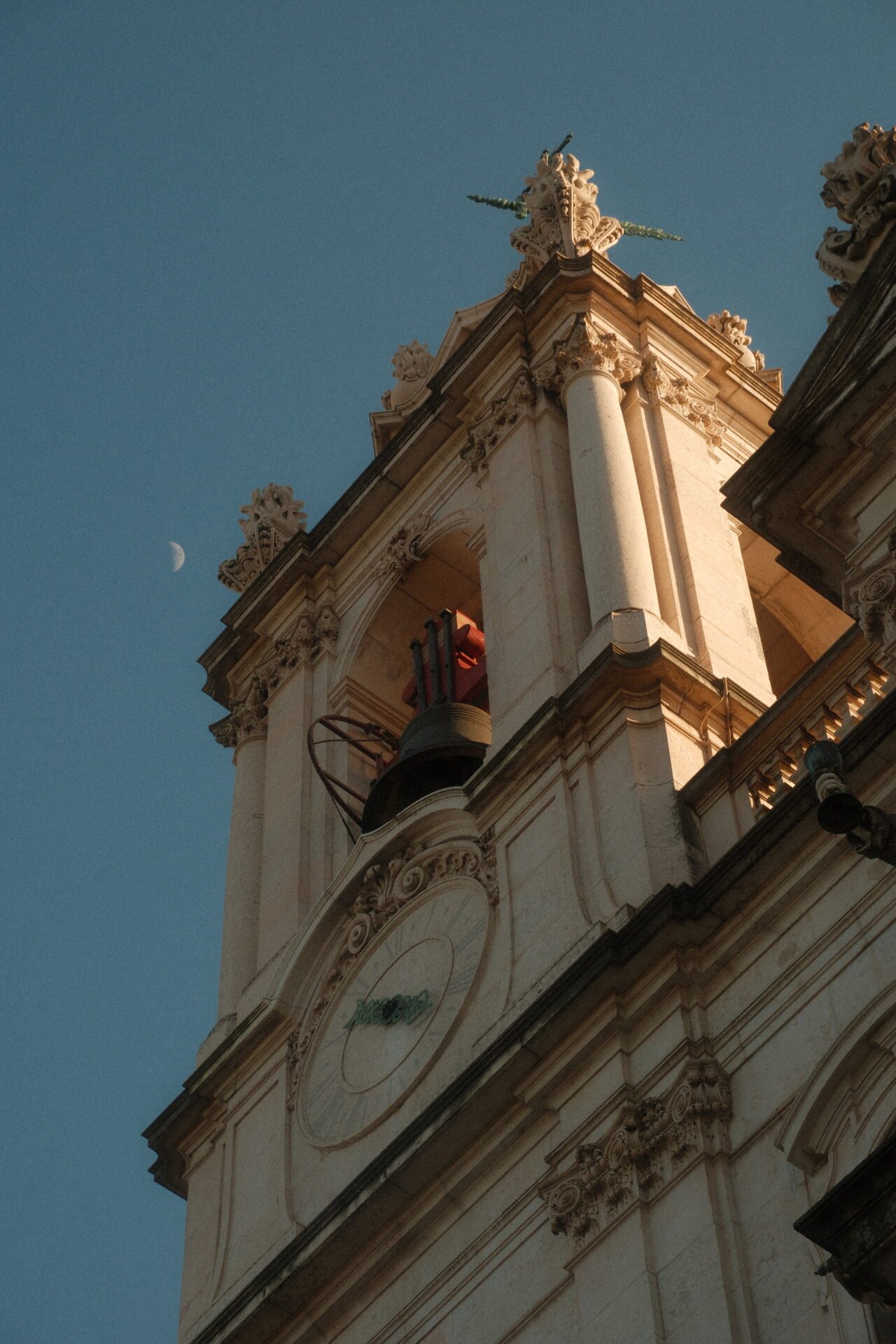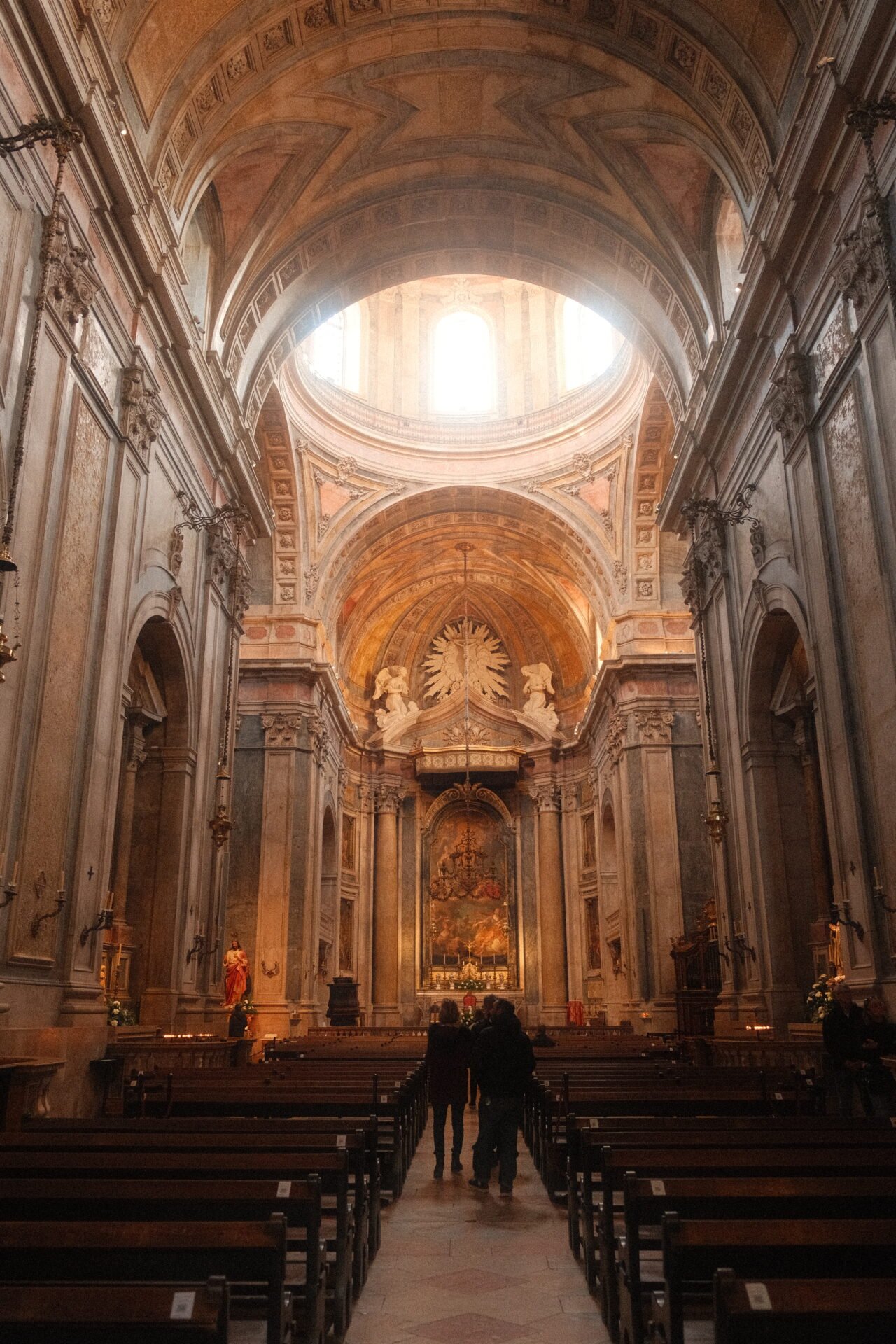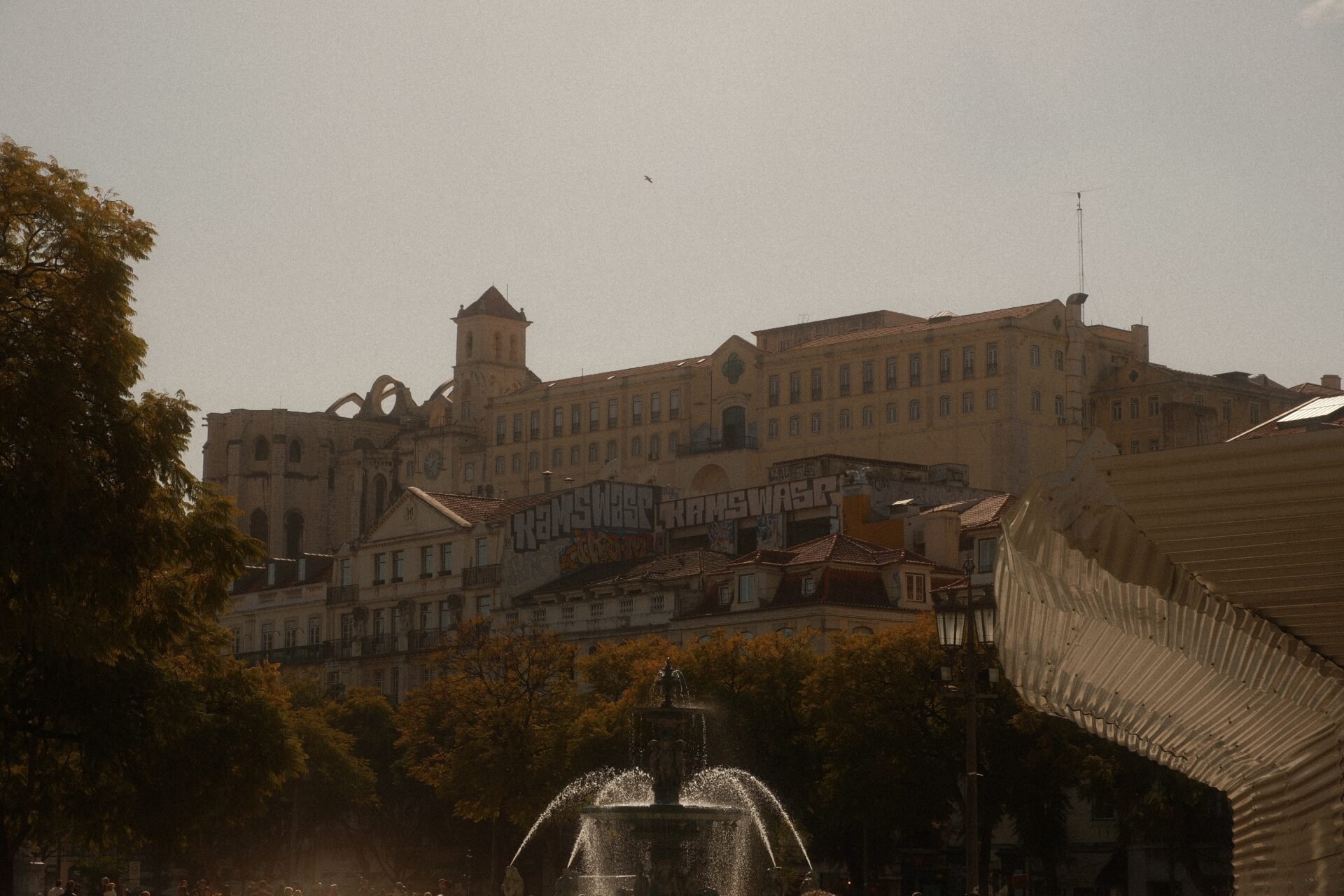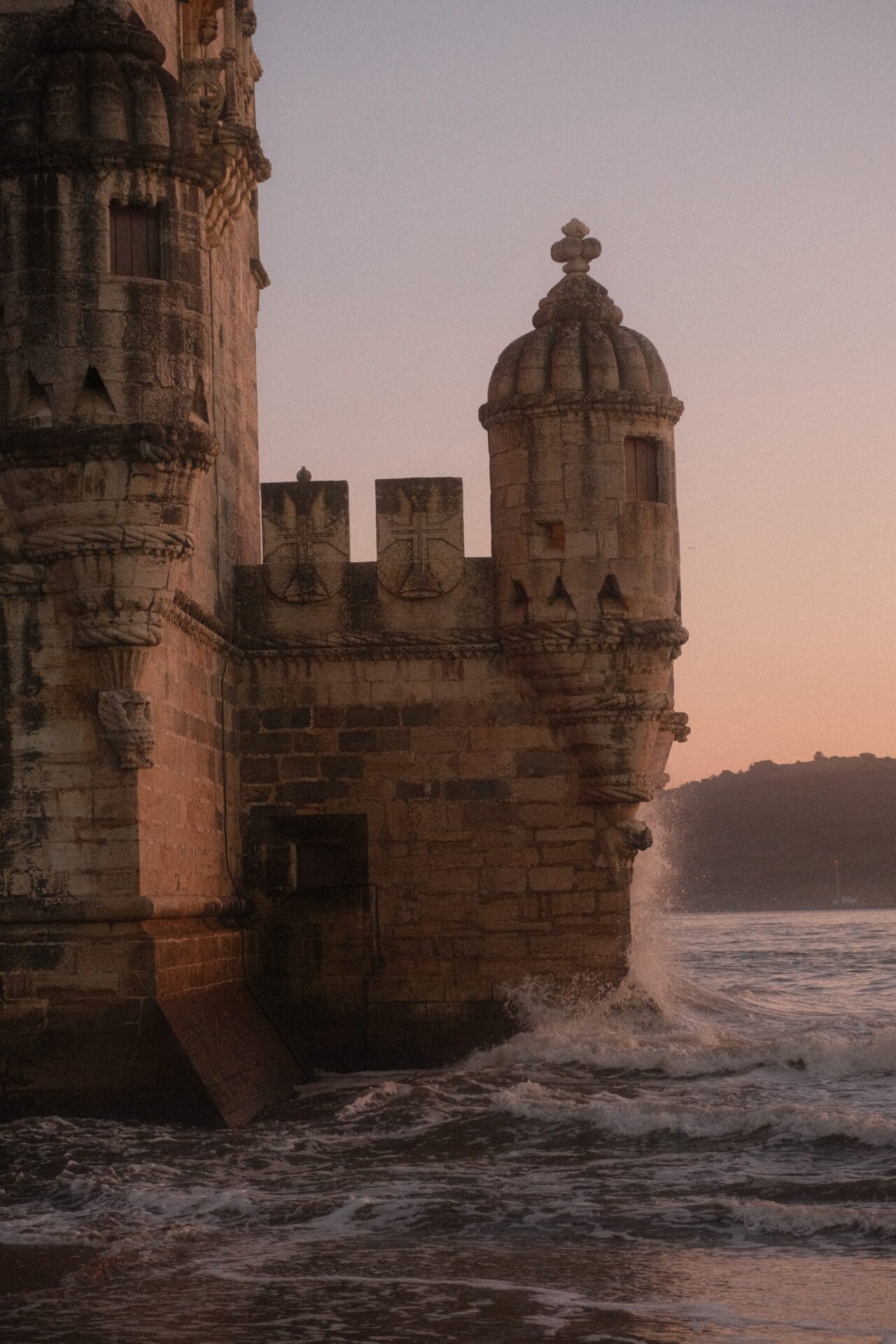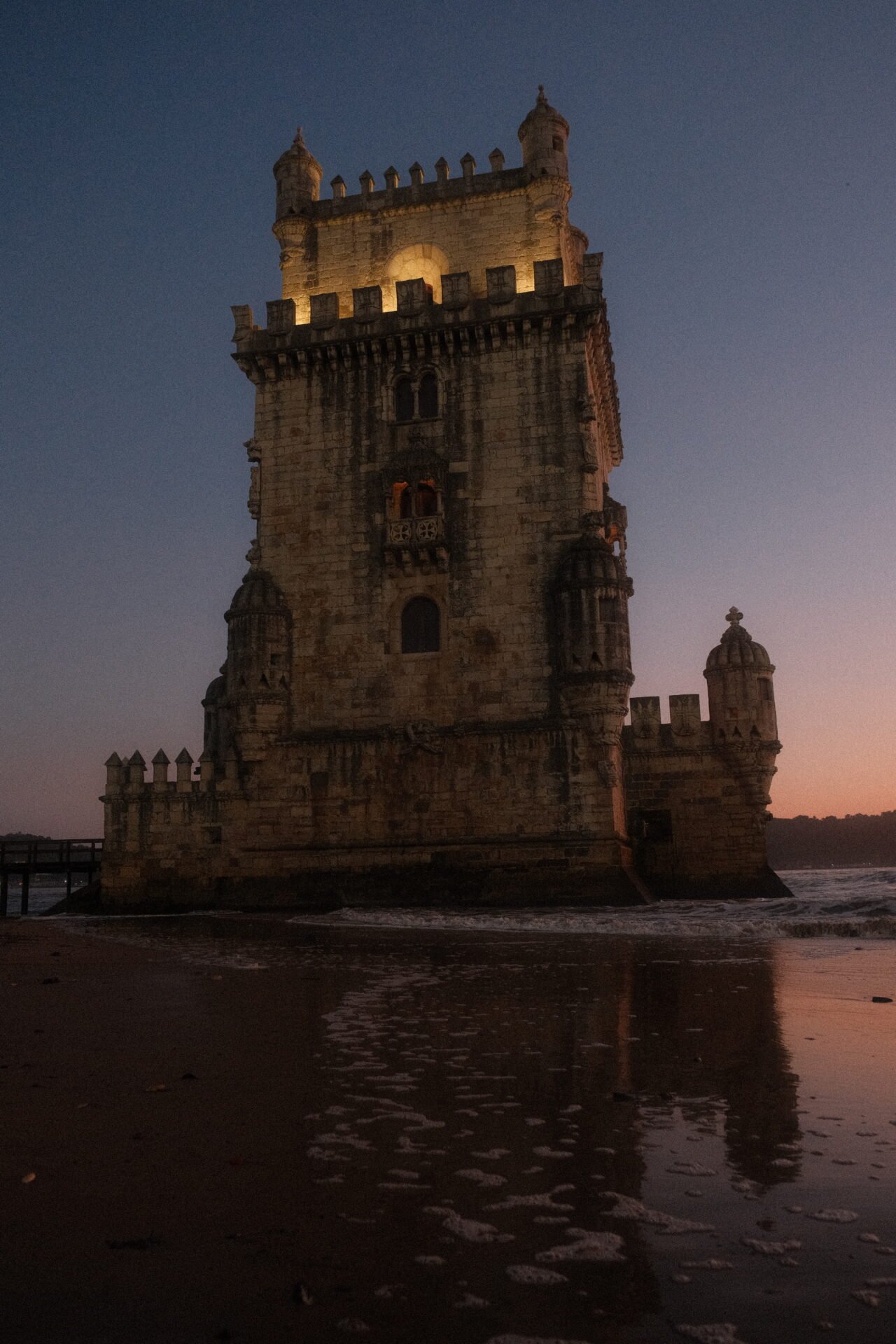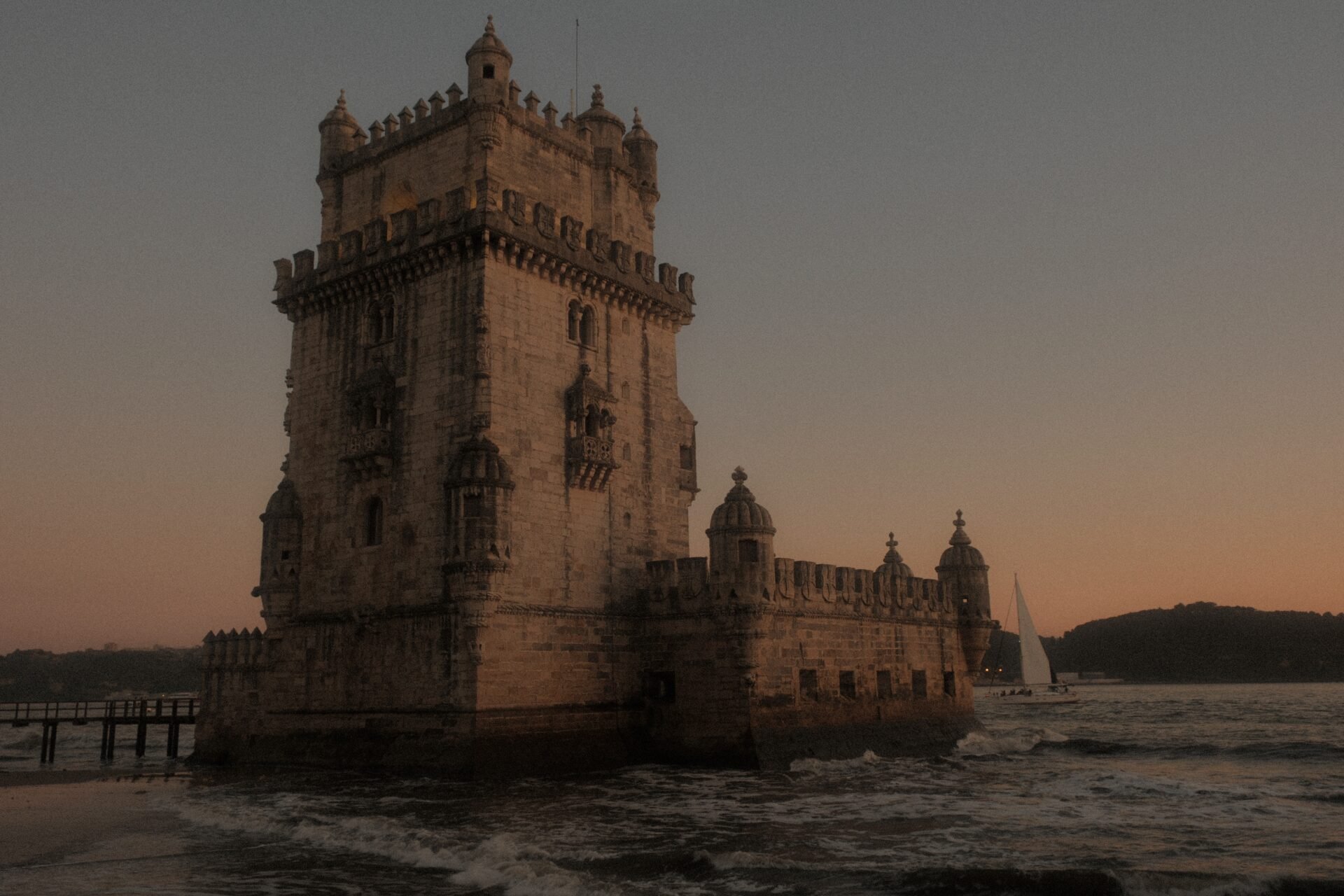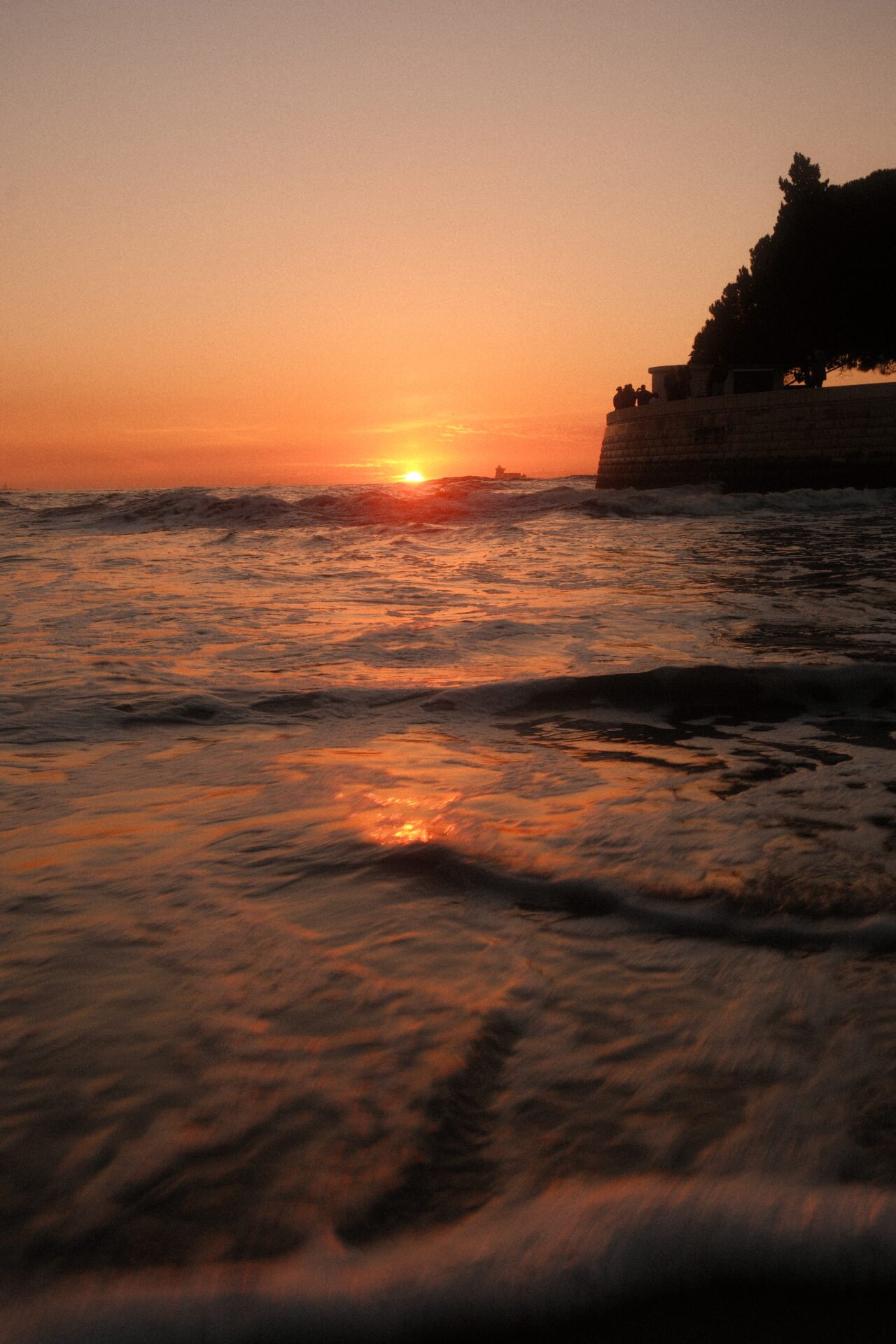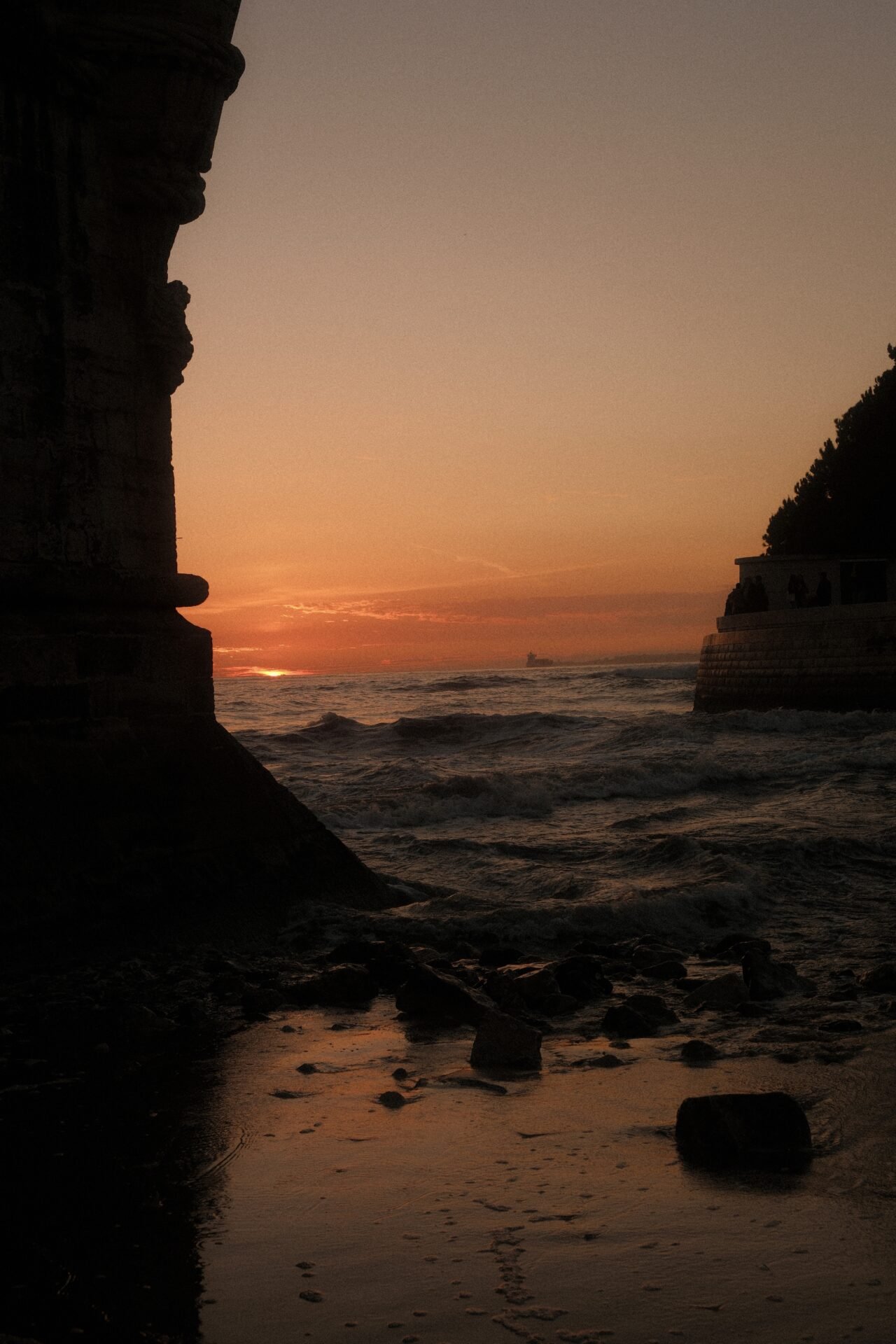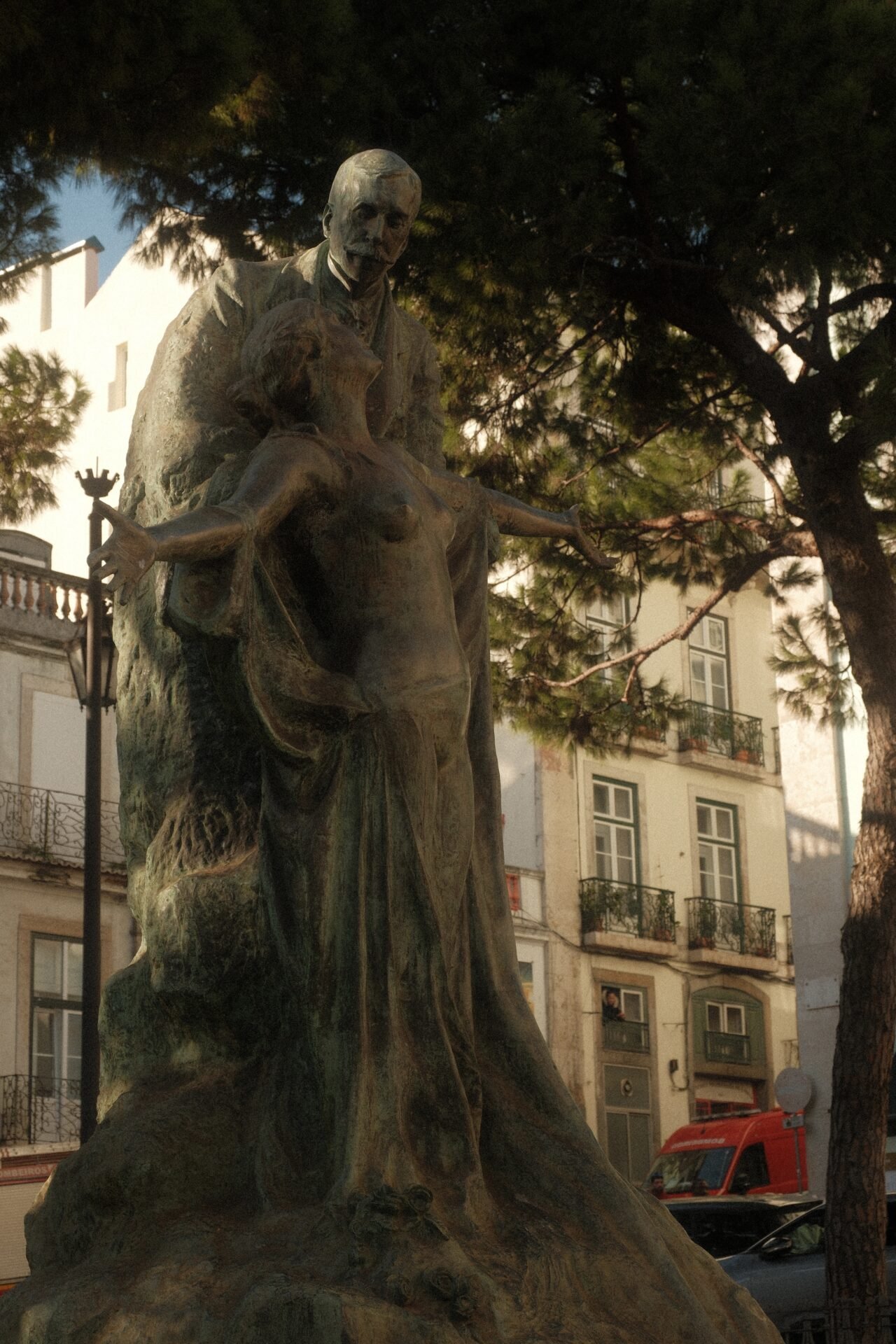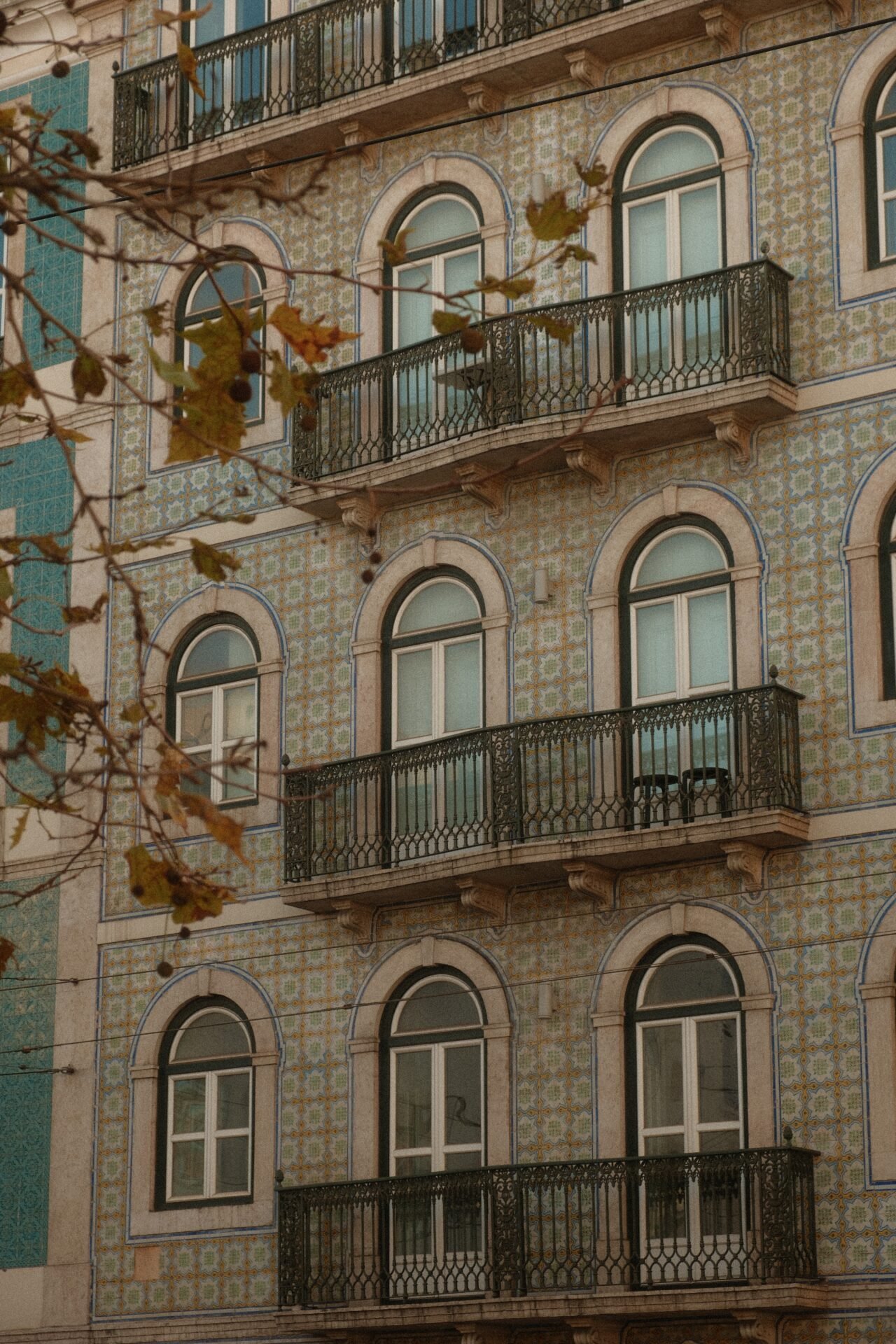The Perfect Way to Spend One Day in Lisbon
Visited February 4, 2025
Belém Tower – Photos in this post were taken on my Fujifilm X-T5 using the Summer Chrome recipe
Lisbon is one of those cities where you could easily spend weeks or even months exploring. Around every corner and down each alley, you’ll discover hidden gems waiting to be found. If you only have time for one day in Lisbon, the best way to explore is on foot, staying downtown where the city’s charm is most alive. Many of the most memorable sights are best experienced at a walking pace, allowing you to soak in the atmosphere and appreciate the details. Plus, for a photographer like me, wandering on foot is the perfect way to capture the city’s stunning architecture and vibrant street life.
When my sister and I visited Portugal, we spent one day in Lisbon, one day in Sintra, and five days in Madeira (my sister stayed in Portugal for one more month after I left). You can read more about Sintra here and Madeira soon (working on this post now) and combine all of these itineraries into one for the ultimate seven-day Portugal vacation. We opted for just one day in Sintra instead of two in Lisbon because Sintra is one of the best day trips from the city, renowned for its fairytale-like castles.
Wanting to stay downtown in Lisbon near a metro or train station for easy access to transportation (Lisbon’s hills can be quite the workout), we focused on four central neighborhoods, all within walking distance of major attractions. Baixa/Chiado, Alfama, Bairro Alto, and Cais do Sodré each offer a distinct experience. If nightlife is a priority, Bairro Alto and Cais do Sodré provide a lively, party-like atmosphere, just don’t expect much sleep! But if you prefer a quieter, more historic setting, Baixa/Chiado and Alfama might be more your speed.
Since my sister and I prioritize sleep over nightlife, we chose to stay at the base of Alfama, Lisbon’s oldest neighborhood, at this hotel. Our hotel was just a five-minute walk from the Terreiro do Paço metro station, making it easy to get around. You can reach the hotel either by metro from the airport or with a budget-friendly taxi or Uber ride, which costs less than $15.
Once we settled on our accommodation, I spent hours researching the best things to see in downtown Lisbon and pinned them on my Google Maps. Rather than sticking to a strict itinerary, we simply set out toward one destination and let the day unfold naturally, wandering from one spot to the next. This approach led to some unexpected adventures, including an impromptu tuk-tuk tour through central Lisbon! Here’s how we spent our one day in Lisbon:
Lisbon Cathedral & Tram 28
After enjoying breakfast at Breakfast Lovers Alfama (dinned her twice because it was so good), we headed toward Lisbon Cathedral to catch the iconic Tram 28. This historic tram winds through some of Lisbon’s most picturesque neighborhoods, stopping at several popular attractions along the way. Keep in mind that Tram 28 can get extremely crowded, especially in the summer. While it’s worth hopping on if you’re near a stop and need to reach a destination, you might also choose to simply snap a photo of it and explore on foot instead.
We took the tram that was heading downhill (the one winding uphill takes you through the center of Alfama) to its final stop near Praça Luís de Camões, where we caught the metro to Rossio the top of the hill. This way, we could explore while making our way downhill rather than tackling the climb from the bottom up.
Praça Luís de Camões
Praça Luís de Camões is named after Portugal’s most celebrated poet, whose work is so revered that his death is commemorated as a national holiday. His influence is seen across the country, with numerous streets bearing his name. This lively square sits in a central location, surrounded by shops, restaurants, and winding alleyways. From here, we hopped on the Baixa-Chiado Metro and took it up to Rossio Metro to continue our exploration.
Praça do Rossio
Praça do Rossio, also known as Rossio, is one of the liveliest plazas in Lisbon and has been a central gathering place for centuries. The entire square is decorated with beautiful traditional Portuguese mosaic cobblestones, fountains, and statues. Praça do Rossio is surrounded by shops, restaurants, hotels, and alleys. This area would be a great place to stay in an Airbnb or hotel, as many attractions are within walking distance. From the Rossio Metro station, we meandered to the furthest end of the square to investigate a building we saw in the distance.
Igreja de São Domingos
The building we spotted in the distance was Igreja de São Domingos (Church of Saint Dominic), a historic church dating back to 1241. It has withstood two major earthquakes, one in 1531 and the devastating quake of 1755, as well as a catastrophic fire in 1959. The fire, which took over six hours to extinguish and claimed the lives of two firefighters, gutted the church, destroying many valuable paintings and statues. Even today, the charred columns bear visible scars from the disaster.
Beyond natural calamities, the church has a dark history. It was the site of a massacre, the Portuguese Inquisition, and numerous executions. This long history of tragedy makes Igreja de São Domingos one of Lisbon’s eeriest landmarks. Walking through its shadowy interior, I could almost feel the weight of its haunting past.
Just outside the church, the atmosphere shifts completely. The small square off Rossio is lively and carefree. Right across from the church, we tried Portugal’s famous pastry, the pastel de nata. If you haven’t had one of these sweet custard tarts yet, I highly recommend getting one from Nata Portuguesa, it was my favorite out of all the places we tried.
How to Know if a Pastel de Nata Is Worth Buying:
A good pastel de nata should have a fluffy center. If the custard is too sunken in, it’s usually not as fresh or flavorful.
SAFETY NOTE: To the left of the church, beyond the railing to the north, you’ll see an alley winding up the hill. Do not continue into the alley.
I had walked along the railing just before the alley to take a few pictures (some of the ones above) while my sister chatted with our tuk-tuk driver, Rui. He warned her that if I walked into the alley, she needed to run after me and bring me back to the square because it wasn’t safe. We had noticed a few police officers standing in front of the church, and Rui explained that they were there specifically because of issues in that alley. Speaking of Rui…
Tuk-tuk tour
My sister bargaining
As I was wandering around taking pictures, my sister struck up conversation with Rui. He’d seen me walking around with my camera and said that my sister and I looked like we were enjoying ourselves, which made him happy because he was proud of his country. He grew up in Portugal and said that his ancestors had helped build Igreja de São Domingos, which is why he parked his tuk-tuk in front of it. Rui said that he was bored since it was the slow season and that we seemed like fun people to be around, so he offered us a 2-hour tour for €70 (which turned into 3-hours because he showed more than planned) instead of his normal rate of €100. Since we were only together in Lisbon for one day and wanted to see as much as possible, we decided to take him up on his offer.
We were fortunate to get a discounted, more personalized tuk-tuk ride. During the busy season or when booking online, the price is typically higher. This might not fit into your budget, and that’s okay! You can still explore downtown on foot and experience most of the major attractions. A tuk-tuk ride is simply a fast way to see many of the main sights in a short amount of time. Plus, we hadn’t planned on taking a tour, it just happened.
Santa Justa Lift
The Santa Justa Lift, also called Carmo Lift, is an elevator that connects the lower streets of Baixa to the Bairro Alto district. From the top you will have 180-degree views of Lisbon’s center. You have to pay to use the lift, but there is a way to get the same view as the lift for free (the last stop of our tour). The lift was one of my favorite structures that we saw in Lisbon because of its unique shape.
Igreja de São Vicente de Fora
If you’ve ever been inside St. Peter’s Basilica in Rome, Igreja de São Vicente de Fora reminds me of a smaller version of it. The inside will make you feel miniscule! The name “São Vicente de Fora” (“St. Vincent on the Outside”) refers to the fact that the original church, from 1147, was built outside the city walls. The church is free to get into, but to explore the monastery you have to pay €4. The monastery, dedicated to St. Vincent in 1582, has the world’s most extensive collection of baroque tiles. The rooftop of the monastery offers views of Alfama, the river, and the National Pantheon.
National Pantheon
The National Pantheon is considered Portugal’s first baroque monument. Originally known as the Church of Saint Engratia when it was built in 1682, it became the National Pantheon in 1916. The building features an octagonal floor plan centered around a Greek cross and houses the tombs and cenotaphs of the country’s most significant cultural figures. Its interior was also inspired by St. Peter’s Basilica in Rome.
Miradouro da Senhora do Monte
Miradouro da Senhora do Monte was once associated with young lovers, drawn by its seclusion and romantic setting. Today, you will find locks on the fence (above), similar to those on Love Lock Bridge in Paris. It is one of the calmest places to take in the city, offering stunning panoramic views. From this vantage point I was able to bust out my telephoto lens and get some awesome compression shots of the city. Out of all the places we stopped on our tour, we spent the longest here.
Praça do Comércio
While we didn’t stop at Praça do Comércio (I got these pictures from the tuk-tuk as we drove by), this is another square worth checking out if you are exploring on foot. It is at the bottom of the hill from earlier attractions and is close to the metro, so it makes a good ending point if you started at the top of the hill.
Basilica da Estrela & Jardim da Estrela
Basílica da Estrela is a stunning baroque and neoclassical church built by Queen Maria I in 1790 as a gesture of gratitude for the birth of her son. Her tomb is located inside, near the entrance to a remarkable nativity scene, the largest in Portugal. This nativity scene features over 500 terracotta and cork figures, crafted by renowned sculptor Machado de Castro. Yet again, this church draws inspiration from St. Peter’s Basilica in Rome (are you noticing a pattern?).
Directly across from Basilica da Estrela lies Jardim da Estrela, a quaint park. The park is a popular spot with Lisbon locals and a lovely place to relax after sightseeing. Rui allowed us to stroll through the park before picking us up on the other side.
Carmo Archaeological Museum
View of Carmo Archaeological Museum from Praça do Rossio
Earlier in the day at Praça do Rossio, we noticed a uniquely shaped building on a hill in the distance. Before meeting Rui, we had considered walking toward it, and he assured us he would take us there. Sure enough, this is where our tour with Rui came to an end.
Built in 1389 by one of Portugal’s most famous medieval heroes, D. Nuno Álvares Pereira, Carmo Church quickly became a significant landmark for both the city and the nation. His burial inside the church further cemented its historical importance. However, the devastating 1755 earthquake that damaged Igreja de São Domingos also struck Carmo Church, followed by a fire that destroyed most of its contents. Reconstruction was never completed, and in 1864, the site was transformed into the Carmo Archaeological Museum.
The Carmo Archeological Museum was the first museum of art and archeology in the country. Currently, it houses a collection of about 1,000 artifacts on permanent display, with an entry fee of just €7. We decided to skip going into the museum so that we could catch the sunset at Belém Tower and instead headed to the right of the museum. There, an opening reveals the top of the Santa Justa Lift, offering the same panoramic view without spending a anything. After soaking in one last breathtaking view of Lisbon, we caught an Uber to Belém Tower.
Belém Tower
Belém Tower, also known as the Tower of Saint Vincent, is a striking fortress that once stood as Lisbon’s grand entrance to the world. More than just a ceremonial gateway, it was a vital stronghold, guarding the city and serving as a launch point for Portuguese explorers. As Lisbon rose to prominence as a global trade hub in the 15th and 16th centuries, King João II envisioned a bold defense strategy to protect its shores. Completed in 1514, Belém Tower became a key piece of this plan, standing firm against potential invaders. Today, this iconic landmark remains a powerful symbol of Portugal’s maritime dominance and far-reaching influence in the early modern era.
Ending our day in Lisbon by watching the sunset from this fortress with the sound of waves crashing against the shore was truly magical and my favorite part of the day. After all, who doesn’t love a seaside castle?
After sunset, we walked to Pita.gr FoodTruck Chef Thassos for some delicious gyros, rode scooters around the outside of Jerónimos Monastery, and then took an Uber back to our hotel to rest up for our adventure in Sintra the next day.
This brings us to the end of my guide on how to spend the perfect day in Lisbon. I hope you’ve gathered some useful tips and information for your own trip to this magnificent city!
Since I am obsessed with Lisbon’s architecture, here are some final shots of a few windows I captured during our day in Lisbon that I loved.



